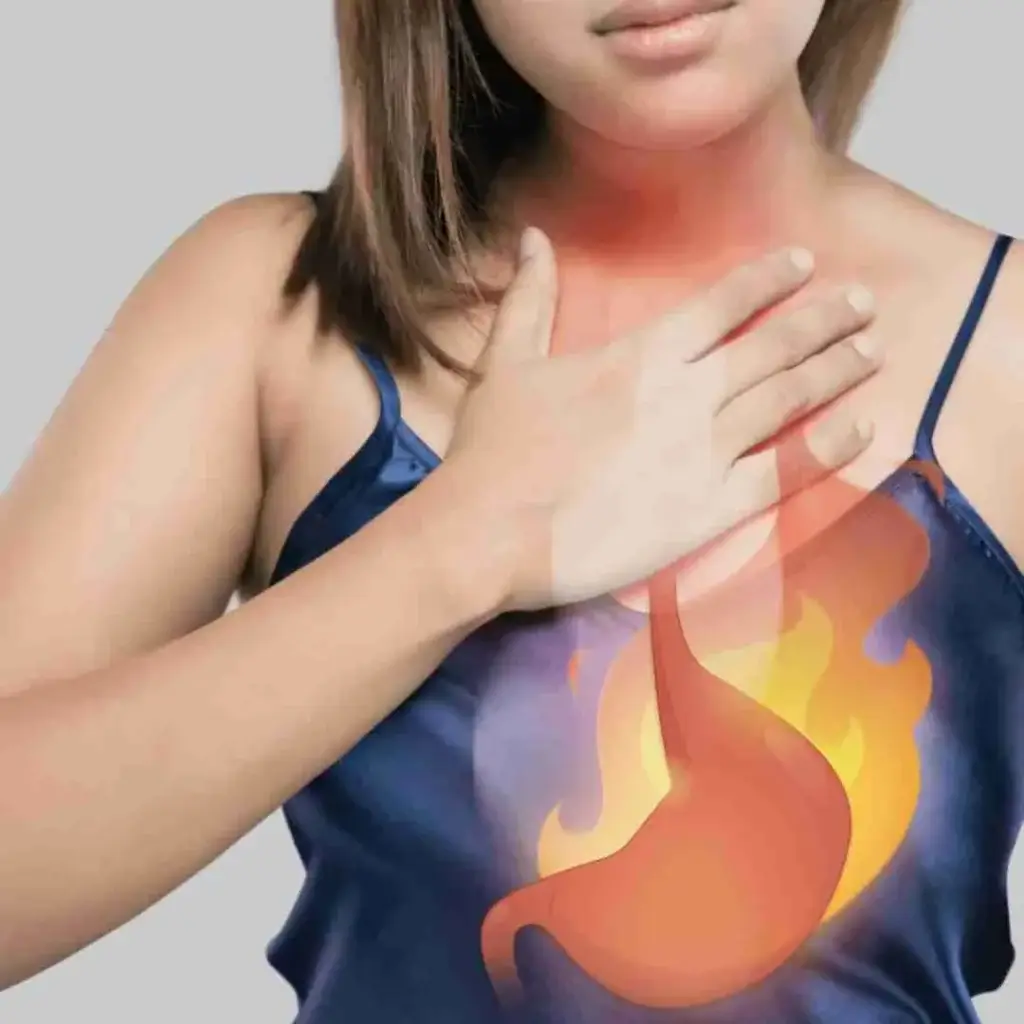Living with migraine is challenging enough. But adding Ehler-Danlos syndrome on top of it takes those challenges to a whole new level.
Ehlers-Danlos syndrome (EDS) is a connective tissue disorder that can affect the skin, joints, muscles, and blood vessels. Joint dislocations, fragile skin, and chronic pain are common among those with EDS. And like many health conditions, EDS occurs more often among those with migraine.
In this article, we’ll cover what EDS is, along with symptoms, causes, and its connection to migraine.
What is Ehlers-Danlos Syndrome?
Ehlers-Danlos Syndrome (EDS) is an umbrella term that refers to a group of connective tissue disorders. Your connective tissue acts as the “glue” that holds your organs in place. It’s made of a mix of substances and proteins, including collagen and elastin.
Collagen is a protein that provides strength and structure to your body and helps maintain skin elasticity. Unfortunately, people with EDS have a gene that affects their collagen production. Because of this, their connective tissues are weaker than they should be. This can lead to a variety of issues, including fragile skin and loose joints.1
Types of EDS
There are 13 different types of Ehlers-Danlos syndrome. While we won’t cover them all in this article, here are three of the most common:
Hypermobile EDS
Hypermobile EDS (hEDS) is the most common type, representing about 80-90% of EDS cases.2 The hallmark sign of hEDS is joint hypermobility. Meaning, the joints move more than they should.
Classical EDS
Classical EDS (cEDS) is a type of EDS that can cause fragile, overly stretchy skin. People with this form often scar or bruise more easily.
Vascular EDS
Vascular EDS (vEDS) is a less common form of EDS, but more severe. Vascular EDS can cause the blood vessels and organs to rupture more easily. This can lead to internal bleeding and increase the risk of stroke.3
How Common is EDS?
Not at all. Ehlers-Danlos syndrome is rare, affecting roughly 1 in 5,000 people worldwide (0.02%).4 To put this in context, about 10% of people live with migraine.
As mentioned, hypermobile EDS is the most common, affecting between 1 in 10,000 to 1 in 15,000 people. Classical EDS affects between 1 in 10,000 and 1 in 20,000 people.
Ehlers-Danlos Syndrome Symptoms
Symptoms vary depending on the type of EDS. However, some of the most common EDS symptoms include:5
- Joint hypermobility. People with EDS often have overly flexible joints. For example, they may be able to bend forward and place their hands flat on the ground. This is because the connective tissue that holds their joints in place is weaker. This can increase the risk of joint pain and dislocations.
- Stretchy skin. Weaker connective tissue can make the skin unusually stretchy. This is known as skin hyperextensibility. Skin may also have a soft, velvety texture.
- Tissue fragility. When the connective tissues are more fragile, the skin and organs are more prone to damage. This can lead to easy bruising, unusual scarring, and poor wound healing.
Other symptoms of EDS include:1,5
- Fatigue
- Joint and muscle pain
- Trouble concentrating
- Digestive issues like heartburn and constipation
- Poor muscle tone
- Dental issues like gum disease
- Hernias
- Pelvis organ prolapse
- Urinary incontinence
- Headaches
What Causes Ehlers Danlos Syndrome?
In short, genetics. Currently, 20 different genetic variants are linked with EDS.3 Each type of EDS can be traced to a specific gene mutation. These genes all affect your body’s ability to produce collagen.
The parts of your body affected depend on the type of genetic mutation you have. In some forms of EDS, multiple genes are involved.5
Since EDS is a genetic disorder, it can be inherited from your parents or passed onto your children. However, it’s possible to get EDS even if your biological parents didn’t have it.
EDS and Migraine: What’s the Connection?
It’s no secret that migraine has a long list of comorbidities. And it turns out, Ehlers-Danlos syndrome is one of them.
No research indicates that Ehlers-Danlos syndrome causes migraine. However, there is a link between the two.
While hypermobility is the textbook sign of EDS, headaches are also common. In fact, it’s estimated that up to 70% of people with EDS get regular headaches.6
Of all headache types, the most prevalent ones among those with EDS are migraine without aura and migraine with aura.7 One study of over 1.6 million Israeli teens found that migraine was twice as common among those with EDS.8
In addition, migraine tends to be more severe among people with EDS.
One study published in Neurological Sciences compared migraine in 33 patients with hypermobile EDS to 66 patients suffering solely from migraine. They found that those with EDS had an earlier onset of migraine (12.6 vs 17.0 years of age).9
In the study, patients with EDS also had more frequent migraines (15 days per month vs 9.3) and more adverse effects on their quality of life.9
Why is Migraine Worse with EDS?
It’s not entirely clear. But some suggest stress could play a role.
Like migraine, living with EDS can take a toll on a person physically and mentally. And stress is the number one migraine trigger. The increased stress of living with EDS may worsen migraine symptoms.
In addition, people with EDS often suffer from comorbid conditions. This includes postural orthostatic tachycardia syndrome (POTS) and mast cell activation syndrome (MCAS).10 Like EDS, these conditions can increase the risk of migraine and potentially make symptoms more severe.
Plus, many people with EDS may turn to medications like aspirin or ibuprofen to manage pain. If used regularly, these may contribute to medication overuse headaches.
How is EDS Diagnosed?
Each type of EDS has its own criteria for diagnosis. This consists of a set of symptoms that characterize each condition.
If your doctor suspects you have EDS, they’ll likely do a physical examination with a series of tests. This may include:
- Checking your skin to assess how stretchy it is and to look for scars and bruises.
- Seeing how far you can bend joints like your wrist, elbows, knees, or fingers. For example, can you lift your pinkie finger beyond a 90-degree angle? Or can you bend your knees backward?
- A medical history to see if anyone in your family has dealt with these symptoms before.
Genetic testing can also pinpoint genes related to the rarer forms of EDS. But keep in mind, if no genetic mutations show up, you could still have EDS. You just may have a genetic variant not included in that test.
Other tests may also be recommended depending on the severity of your symptoms. This may include a CT scan, MRI, or echocardiogram.
Managing EDS & Migraine
There’s no cure for EDS. However, certain treatments can help you manage your symptoms. Since EDS can affect multiple body parts, you may need a team of specialists to manage your care.
Treatment will vary depending on your symptoms and the type of EDS you have but may include:
- Physical therapy can strengthen the muscles around your joints. This may help prevent injuries and reduce the risk of dislocations.
- Occupational therapy can help you adjust your daily living to reduce the risk of injuries. They may recommend devices like braces for extra joint support.
- Low-impact exercises like walking, swimming, and pilates help build muscle tone without putting too much pressure on the joints. Contact sports, heavy lifting, and high-impact exercise can increase the risk of dislocations. So it’s best to avoid them.
- Mindfulness practices like meditation are shown to relieve stress, increase body awareness, and reduce sensitivity to pain.11 This can be helpful for both EDS and migraine.
- Skincare routines may need to be adjusted to protect fragile skin. Avoid harsh soaps and vigorous scrubbing and opt for gentle cleansers instead. Wearing sunscreen every day is a must too.
- Hydration is key for EDS and migraine. Drinking plenty of water keeps your joints lubricated and helps maintain tissue elasticity. Dehydration is also a common migraine trigger. Aim to drink at least 2 liters of water a day.
- Nutrition is a crucial part of treating any health condition, including EDS and migraine. Processed foods can cause inflammation and trigger migraine, so it’s best to avoid them. Instead, opt for a diet rich in wholesome foods like fruits, veggies, whole grains, legumes, nuts, and seeds. This will flood your body with vitamins, minerals, and antioxidants to promote healing.
- Dietary supplements should be considered to fill nutritional gaps and support neruological health and comfort such as MigreLief (daily maintenance) and MigreLief-NOW (as-needed / at first warning signs – support for neurological and overall comfort.)
Living with Ehlers Danlos Syndrome
EDS is a lifelong health issue. The good news is, once you learn how to manage your EDS symptoms, you should be able to enjoy your usual activities. However, you’ll want to steer clear of extreme activities like contact sports to avoid injury.
Some people with EDS also have migraine, which adds another layer of challenge. But you have more power than you think. Keeping a heathy lifestyle with a nutritious diet, regular exercise, proper hydration, and mindfulness can help keep your body balanced which may reduce future flares.
Sources:
- https://www.ncbi.nlm.nih.gov/books/NBK549814/
- https://www.aafp.org/pubs/afp/issues/2021/0415/p481.html
- https://medlineplus.gov/genetics/condition/ehlers-danlos-syndrome/
- https://www.ncbi.nlm.nih.gov/books/NBK549814/
- https://www.ehlers-danlos.com/what-is-eds/
- https://www.migraineagain.com/ehlers-danlos-syndrome-headaches-and-migraine/
- https://link.springer.com/article/10.1007/s10072-015-2173-6
- https://headachejournal.onlinelibrary.wiley.com/doi/full/10.1111/head.14526
- https://pubmed.ncbi.nlm.nih.gov/25791889/
- https://link.springer.com/article/10.1007/s11910-023-01307-w
- https://www.ncbi.nlm.nih.gov/pmc/articles/PMC4941786/


